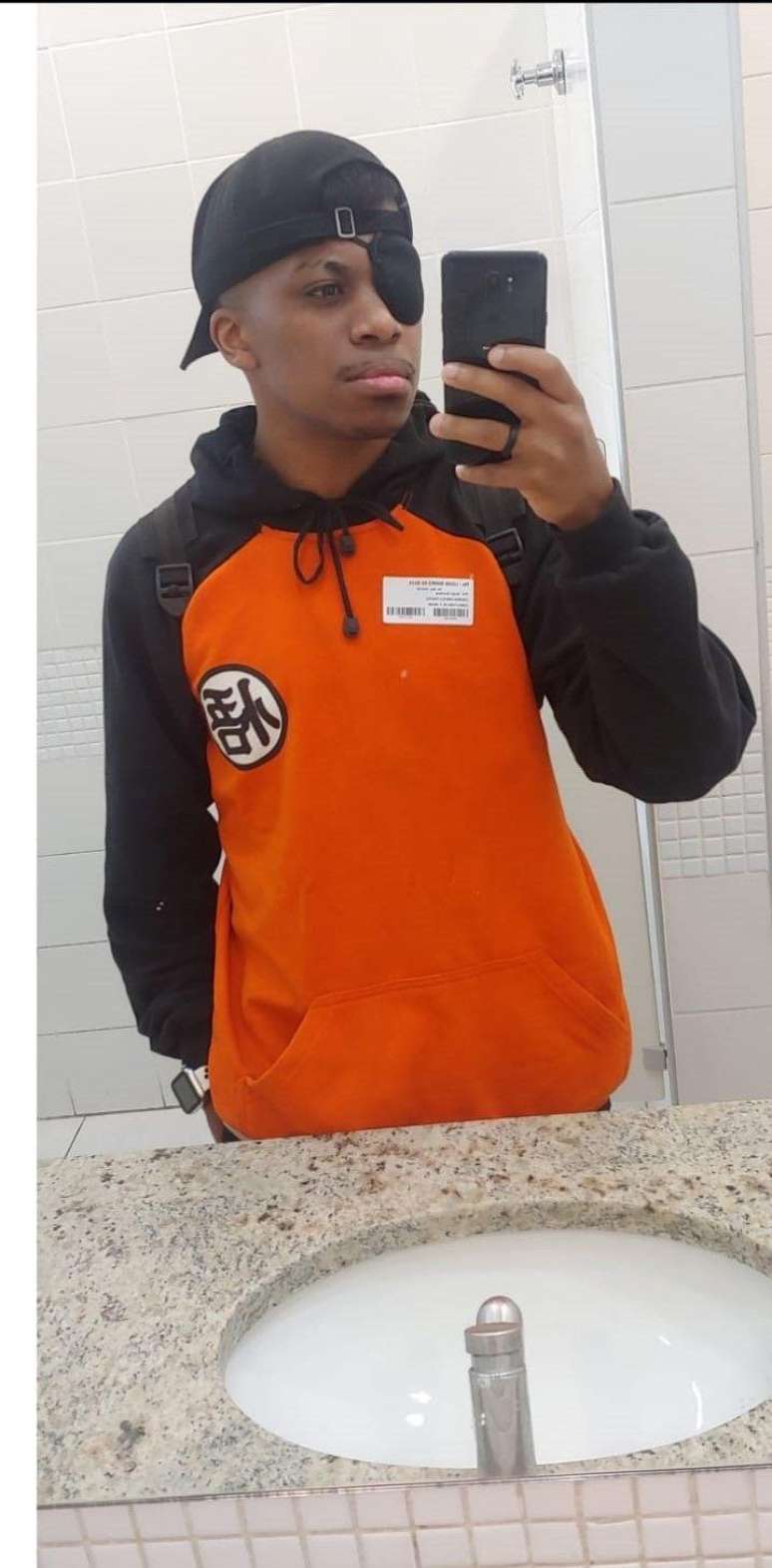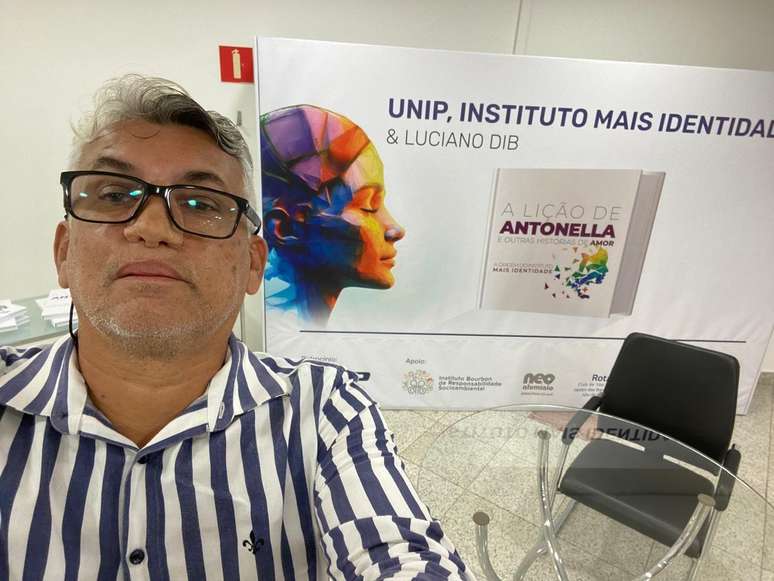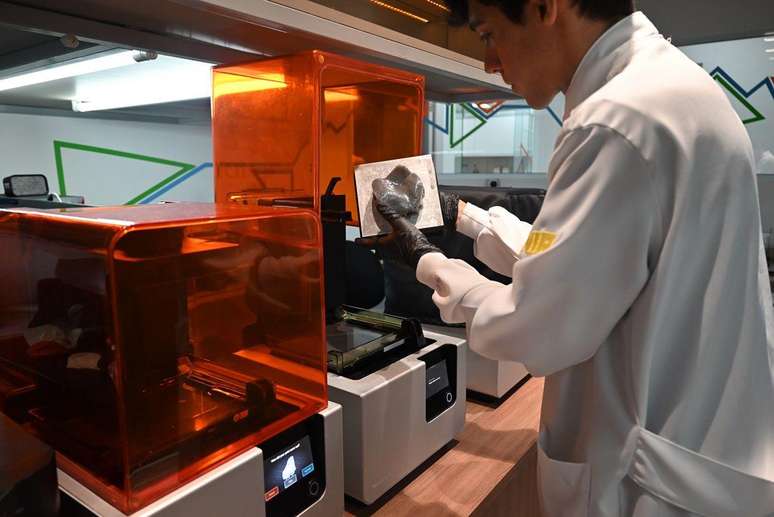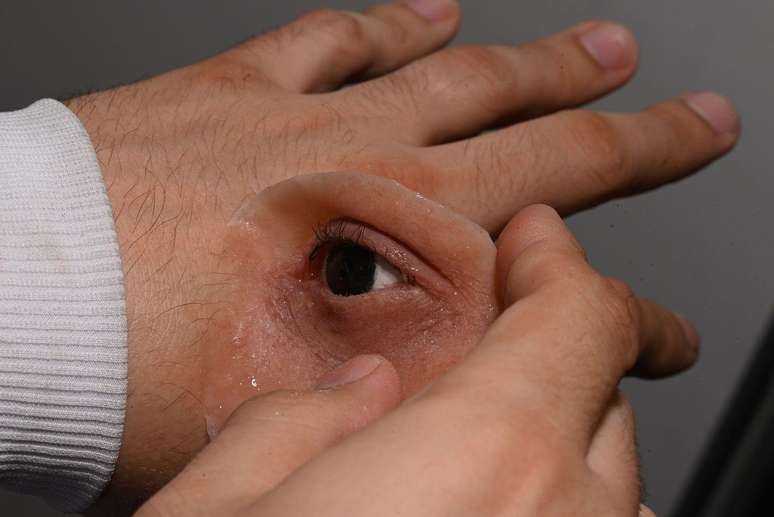A non -profit organization offers free prostheses to patients who face some type of cancer in the face and neck region.
A red ball in the internal corner of the eye attracted the attention of the operator of the machine to 28 years old Lucas Soares da Silva. Resident in Mauá (SP), he looked for medical treatment and after some tests the diagnosis came from a tumor.
To contain cancer progress, it has undergone surgery. However, three years later the signs appeared again.
“I made a scraping again for the removal of the tumor. But it is always back. Between 2014 and 2020 I had four surgical interventions,” recalls Lucas.
In 2021, with the return of the disease, the operator of the machine received the news that should have undergone a new surgery, this time more invasive – it was necessary to remove the left eye bulb to contain cancer progress.
“It was a shock to know that I would have lost part of the vision. In addition to taking care, it was necessary to clean in the whole area where they had cancer cells. So I ended up losing part of the eyelid,” he says.
Lucas remembers having faced several medical complications due to surgery and that at the beginning the aesthetic problem has not influenced it. However, every time he leaves the house he was the target of curious and even prejudiced eyes.
“I started to wear a slap plated for the eyes or a bearing of those used in surgery so as not to be so evident that I didn’t have an eye, but people continued to look at me,” he says.
Last year, Lucas started looking for prostheses that could improve its appearance, however, in the cost of about $ 15,000, he renounced his purchase because he could not afford to incur this cost.
It was then that during an internet survey, he met the Institute plus identity, a non -profit organization that offers free prostheses to patients who face some type of cancer in the face and neck.

“I sent them a message on the Instagram page, hopeless, but soon they returned to me. My prosthesis arrived in August. It is very easy to put, only paste with her adhesive for her. Today I walk on the street and no one else realizes that I don’t have an eye,” he says.
Like Lucas, even the 52 -year -old civil official Emerson Aparecido da Silva faced a tumor on his face that left him with sequence. In January 2023 he was diagnosed with skin cancer and had to undergo a nose surgery to remove the tumor.
“It started with a wound similar to a pimple that emerged on the tip of the nose. At the beginning, the doctor indicated drainage in the area, but after some tests e consultations In other professionals I was diagnosed with cancer and I received the surgical indication, “he recalls.
Two months after the diagnosis, Emerson removed the tumor and lost most of the skin of the nose. Situation that moved with your psychological.
“I did not accept the loss of my nose, the intervention was not only moved with my face, but with my emotional. I was insulated and I avoided having contact with people,” he recalls.
The situation changed when Emerson was referred to the Più Identity Institute, which made his facial prostheses. While the bone structures of Emerson’s face were kept, he received a prosthesis that adapts to the region of the nose.
“After learning that I could use a prosthesis, otherwise I came to see the problem. I resumed social life, I went back to work and started having more convivial with my family,” he says.
The prostheses are offered for free
Lucas and Emerson’s prostheses were produced by the Identity Institute of San Paolo Mais, using the technology of a 3D printer and a mobile device. Cheaper production time, customized and less, are offered free of charge to patients who have treated cancer in the head and neck region and also to people with a sort of deficiency in this area of the body.
Unlike traditional protests, which require long molding processes, high costs and manual adjustments, the versions made on 3D printers can be developed by digital images made with smartphone cameras, reducing waiting times from months to weeks or even days.
“We have already had cases in which the prosthesis was ready in three days. This is what we call special cases, which are when patients come from other states and give the utmost priority so that it can return home as soon as possible,” says Luciano Dib, a surgeon Buccomaxallofacial and director of the Institute.

The process of realization of the prosthesis works as follows: the patient’s face is recorded through digital photographs, which are transformed into realistic three -dimensional models. The affected area is recreated with the help of software that allows careful planning of the prosthesis. Then the part is produced in resin on a 3D printer and this mold is tested on the patient to see if no adjustment is needed.
Following, with the approved mold, it is sent to create the prosthesis that is performed manually in silicone and receives the individual characteristics of each patient, such as the color of the skin and other details.
This type of prosthesis can be placed in two ways. The first, and simpler, is through stickers that they “glue” the patient’s prosthesis with a skin adhesive. The second is through magnets. In this model it is necessary that the patient has surgery to implant titanium pins in the face region where the prosthesis will adapt.
“The choice of the prosthesis depends on each patient and if the bone structure of the face has been preserved after the removal of the tumor. In many cases, part of this structure is also compromised, which makes the self -control of the indicated prosthesis”, explains Dib.

In addition to reducing production costs up to 50% compared to conventional prostheses, which can cost up to 50,000, the method that the 3D printer also shortens the preparation time of the prosthesis, accelerating the patient’s return to social life.
“Receiving a diagnosis of cancer is never easy because it is related to the treatment that is usually quite invasive. When the tumor is on the face, there are functionality losses and this further affects the psychological of patients and brings with it the difficulty of facing the mirror. Social reintegration”, analyzes Nicola Cohen, psychologist of the Institute.
In the last two years, according to Dib, over 100 patients have been treated with this 3D methodology and have received prostheses. These patients are addressed to hospitals who are treated with cancer or also come with their own means, such as Lucas.
Before gaining the prosthesis, all patients undergo a screening and also follow a multidisciplinary team with dental surgeons, speech therapists, nutritionists, psychologists and social workers.
“Many people think that receiving the diagnosis of healing of cancer is the final point of the treatment, but not entirely. Patients who get sequels on their face often cannot resume life and this is what we try to change. We want to reinsert these people to society. Today we have a waiting line of 90 people waiting for prostheses.
The estimate of the National Cancer Institute (Inca) underlines that in 2025 39,550 new cases of head and neck cancer appears, included in this sum the tumors of the oral, thyroid and laryngeal cavity. If we add the skin cancer of melanoma, which also reaches the head and neck region, the number rises to 48,530 new cases.
Source: Terra
Ben Stock is a lifestyle journalist and author at Gossipify. He writes about topics such as health, wellness, travel, food and home decor. He provides practical advice and inspiration to improve well-being, keeps readers up to date with latest lifestyle news and trends, known for his engaging writing style, in-depth analysis and unique perspectives.








